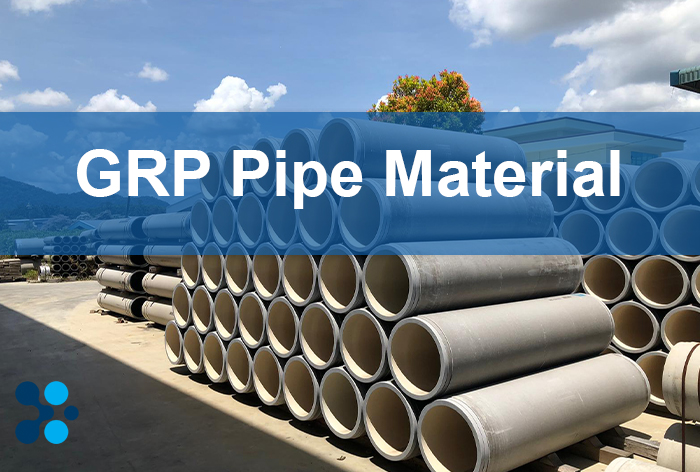
After extensive experimentation with various resins and fibers during the first half of the last century, the development of reinforced plastics really took off in the 1940s with the advent of mass production of fine strands of glass filaments, and polyester resins. Combining these two, a new composite material was created: Glass fiber reinforced plastic (GRP), which soon evolved to be an important material in the automotive, marine, aerospace, and construction industries. Just as steel reinforced concrete is fundamental in heavy construction, GRP Pipes Material is essential when it comes to demands of high strength, light weight, and durability.
Glass fiber reinforced plastic is a composite material, consisting of a polymer resin, reinforcing glass fibers, and fillers. The most common polymers are thermosetting polyester, vinyl ester, and epoxy resins. When cured, the resin defines the shape of the GRP part, and makes it resistant to chemical and environmental loads. There are several types of fiberglass available, the most common being E- and E-CR (Electric/Chemical/Resistant) glass, with tensile strengths many times higher than steel. The most common filler is fine silica sand.
The glass fibers provide strength and stability, and the fillers contribute to high bending stiffness. With the glass fibers oriented in the desired direction, the fillers strategically placed, and all wetted out with resin and then cured at elevated temperatures, an exceptionally strong and stable laminate is formed. The resin provides excellent protection against chemical corrosion. The final product is waterproof, has good thermal stability and resistance to UV radiation, making it ideal for both indoor and outdoor applications. GRP is a highly durable material, ideally suited for a wide range of applications in various industries where very long lifetime expectancy is required.
The development of the continuous filament winding process for GRP pipes material started in the 1960s and has been refined and improved over the years. When engineers found a way to create a sandwich laminate with highly reinforced skins and sand filled core, GRP pipes became very competitive, both in terms of production and installation. The range of applications for GRP pipes is broad: sewer and drainage systems, potable water, raw water, irrigation, hydropower penstocks, industrial pipe systems, cooling water, sea intakes and outfalls, to name a few. The installation methods include open trench, above ground, subaqueous, as well as relining, jacking and microtunneling.

Choose a member and chat on WhatsApp.
Sales Manager

Sales Manager

All rights of this website belong to Nad Polymer Company.